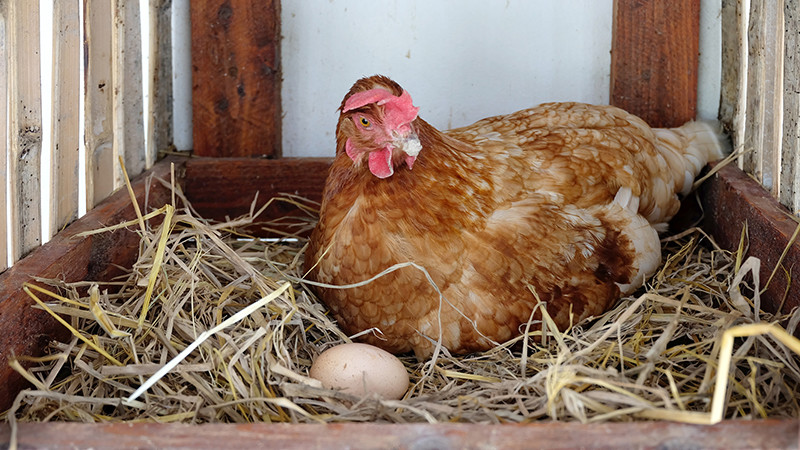

The proper brooding of chickens is one of the most difficult operations on many poultry farms, especially for the beginner. Many poultry keepers who are able to secure good egg yields and fair hatches make a failure of brooding chickens, either in raising only a small percentage of the chickens hatched or in failing to rear strong, vigorous birds which develop into good breeding stock.
Brooding with hens is the simplest and easiest way to raise chickens and is the method which is used almost exclusively on an average farm. Artificial brooders are necessary where winter or very, early chickens are raised, where only Leghorns or other non-setting breeds of poultry are kept, or where large numbers of chickens are raised commercially.
Successful natural rearing of chickens requires convenient facilities, regular attention, and often tries one’s patience, while artificial methods require a larger investment, close attention, and more care, but are more commonly used where large numbers of chickens are raised.
Sitting hens should be confined to slightly darkened nests at hatching time and not disturbed unless they step on or pick their chicks when hatching, in which case the chicks should be removed as soon as dryand put in a basket lined with flannel or some other warm material, and kept near a fire until all the eggs are hatched ; or the eggs may be removed and placed under a quieter hen whose eggs are hatching at the same time.
An incubator may also be used to keep the earliest hatched chickens warm, in case they are removed from the nest.
If the eggs hatch unevenly, those which are slow in hatching may be placed under other hens, as hens often get restless after a part of the chicks are out, allowing the remaining eggs to become cooled at the very time when steady heat is necessary.
Remove the egg shells and any eggs which have not hatched as soon as the hatching is over.
Hens should be fed as soon as possible after the eggs are hatched, as feeding tends to keep them quiet ; otherwise many hens will leave the nest.
In most cases, it is best that the hen remain on the nest and brood the chickens for at least 24 hours after the hatching is over. Hens are often used to raise incubator-hatched chicks and to take the place of the artificial brooder, a practice that is in operation on separately special lots of chicks.
It should be borne in mind, in adding chicks to a hen which already has some to brood, that it is best to add those of the same color and age as the ones already with her, as the hen will often pick the later arrivals if they are of a color different from the ones she is already brooding.
As a rule this transferring should take place at night, although with a quite docile hen it can be done in the morning. Powder the hen with a good insect powder before moving her and the chicks to the brood coop. The hen should be dusted every two weeks or as often as necessary until the chicks are weaned.
Hens will successfully brood 10 to 15 chick- ens early in the breeding season, and 18 to 25 in warm weather, depending upon the size of the hen. This method of handling chickens does away with the artificial brooder, and where one has only a small number of chickens to raise.
 Contact Jaguza Support
Contact Jaguza Support